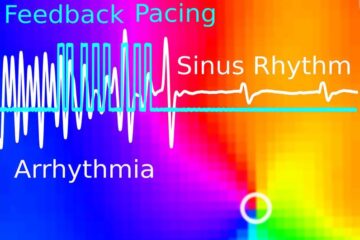Identical twins not as identical as believed

This surprising finding is presented by American, Swedish, and Dutch scientists in a study being published today in the prestigious journal American Journal of Human Genetics. The finding may be of great significance for research on hereditary diseases and for the development of new diagnostic methods.
How can it be that one identical twin might develop Parkinson’s disease, for instance, but not the other” Until now, the reasons have been sought in environmental factors. The current study complicates the picture.
“Even though the genome is virtually identical in identical twins, our results show that there in fact are tiny differences and that they are relatively common. This could have a major impact on our understanding of genetically determined disorders,” says Jan Dumanksi, who co-directed the international study with his colleague Carl Bruder.
“By uncovering these small genetic differences in identical twins where one of them is sick, we have a way of tying specific genetic changes to the genesis of common diseases,” says Carl Bruder.
These researchers studied 19 pairs of identical twins and found that they indeed had the same DNA but nevertheless evinced differences in the number of copies of individual DNA segments. A segment might be missing, or more copies might exist in one twin. This could explain how one identical twin can be afflicted with a disorder while the other twin remains fully healthy, according to the scientists.
Media Contact
More Information:
http://www.uu.seAll latest news from the category: Life Sciences and Chemistry
Articles and reports from the Life Sciences and chemistry area deal with applied and basic research into modern biology, chemistry and human medicine.
Valuable information can be found on a range of life sciences fields including bacteriology, biochemistry, bionics, bioinformatics, biophysics, biotechnology, genetics, geobotany, human biology, marine biology, microbiology, molecular biology, cellular biology, zoology, bioinorganic chemistry, microchemistry and environmental chemistry.
Newest articles

Wildfire danger to increase due to climate change
WSL Institute for Snow and Avalanche Research (SLF) researchers expect an elevated wildfire danger in the Alpine Foreland from 2040 onwards due to changing meteorological conditions. The danger currently remains…

Advanced Brain Science Without Coding Expertise
Researchers at Helmholtz Munich and the LMU University Hospital Munich introduce DELiVR, offering a new AI-based approach to the complex task of brain cell mapping. The deep learning tool democratizes…

Gentle defibrillation for the heart
Using light pulses as a model for electrical defibrillation, Göttingen scientists developed a method to assess and modulate the heart function. The research team from the Max Planck Institute for…





















